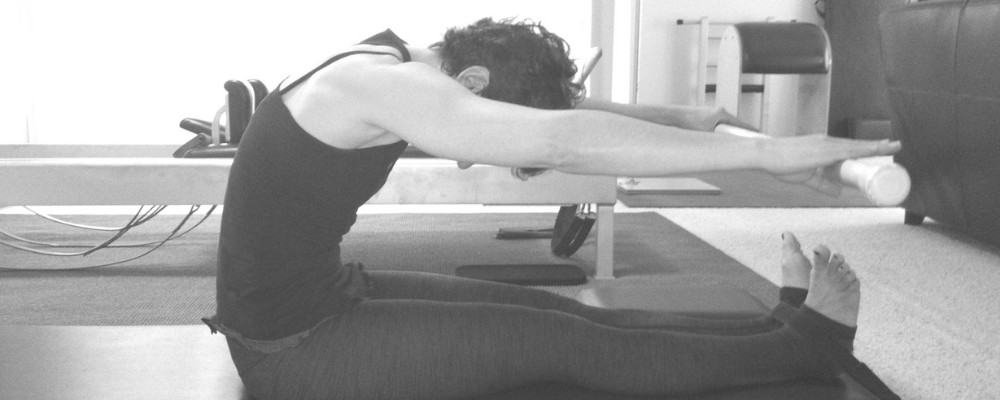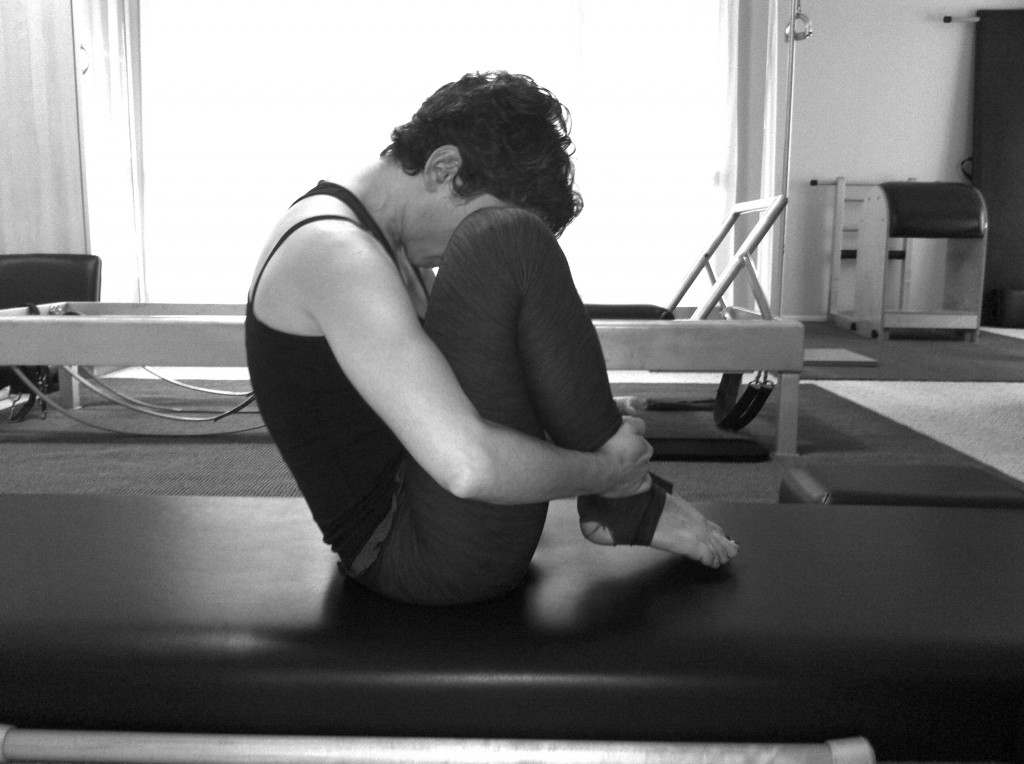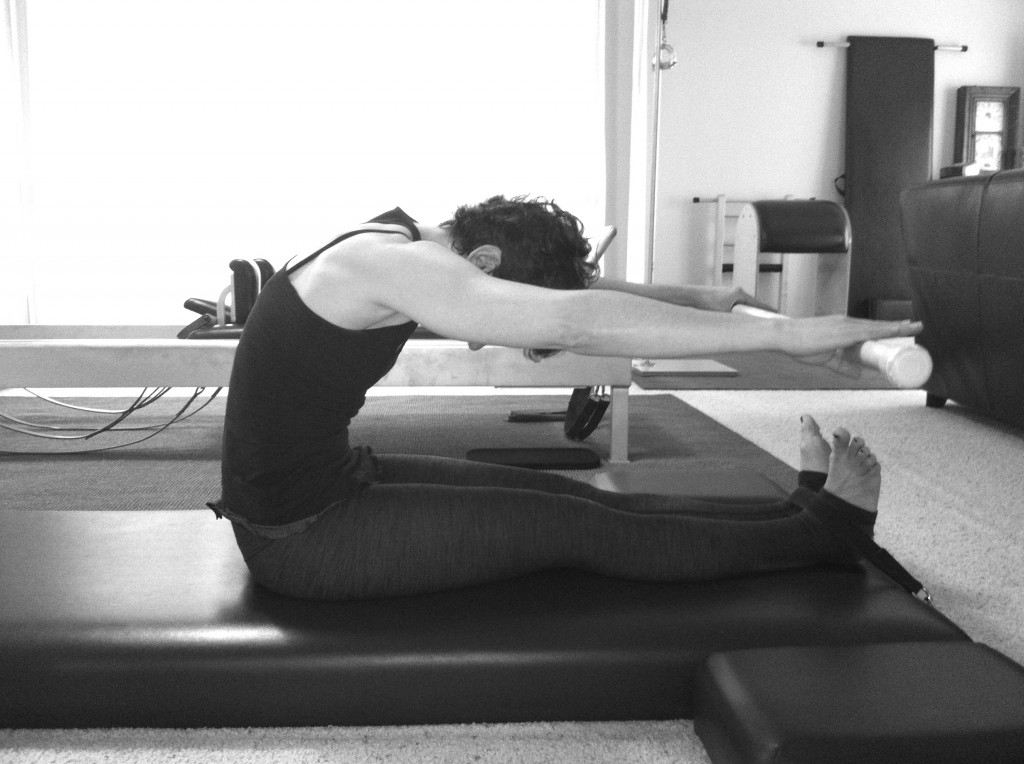The Shape of All Things Pilates: Round Back

Welcome to the second installation of The Shape of All Things Pilates, exploring the organization of the Pilates exercises into Body Shapes, as taught by Karen Frischmann and Sandy Shimoda of Vintage Pilates in Los Angeles.
2. The Round Back
In Pilates training you have probably heard the shape of the Round exercises (particularly the Round shape of the low back) referred to as the ‘C-curve’.
The term ‘C-curve’ does not come from Joe Pilates. I can only speculate that ‘C-curve’ originated with Romana Kryzanowska who coined the term as a teaching shorthand.
A word about the first post on the Tall Back: The concept of Tall is inherent in all of the other Body Shapes. It is your lift and your length, and in the case of the Round Back it will make your shape more akin to a capital ‘C’ than a small lowercase ‘c’.
Rolling Like a Ball is one of the very best examples of the Round Back and can give you a lot of information about your own particular Round Back.

Are you like me? Ever striving to find a Round Back that’s actually round? Let’s work to find your roundest Round Back:
- Lengthen the tailbone downward and use the bottom to help you to round the lower back underneath you just a little bit more. You’re looking for the very bottom of the bottom – shall we say – and you’ll squeeze it together as though you could “point” it toward your heels, which are of course, pressing together.
- Reach up through the back of the ribcage and use the hands to round yourself further up and forward.
- Think about the reach in the spine and see if you can deepen it even further and give the back even more space.
- When you roll, notice if there is a little bumpy spot, where you are unable to roll smoothly and silently. It is this bumpy area that is the spot in your Round back that needs to be strengthened/stretched.
If rolling exercises are challenging, take your time and work to perfect your Round Back and see how smoothly you’ll be able to roll.
Give it a try: Be as Round as You Can Be!
It is this same Round Back that you will find in the middle of The Roll Up.

Here’s a great exercise to begin Tall, as you lie along the mat, before you will start to Round.
- Find the length in the body first: lengthen through the low body.
- Lift in and up.
- Stretch arms overhead to connect to the back.
- As you roll up see if you can round the back in the same manner as you did in Rolling Like a Ball.
Sandy Shimoda likes to think of the long arms and long legs in this exercise as long elastic bands that you can use to pull your abdomen and your Round back down to the floor each time you return to the mat.
Karen Frischmann on the Roll Up:
“It’s not about touching your toes, it’s about finding Round.”
As you practice your Mat at home use Rolling Like a Ball and The Roll Up as touchstones for all the other Round Back exercises: The Roll Over, Spine Stretch Forward, The Rocker with Open Legs, The Neck Pull, The Teaser, Boomerang, Seal, Crab, and so on.
Work with the Round Back to find help on the Reformer and other apparatus.
Perhaps a particular exercise was illuminated by finding the Round Back shape?
Elephant?
The Pull Up on the Wunda Chair?
Yikes! Snake on the Reformer?
Leave a comment below and share your successes. Thank you for reading!

jleelake
Member since 2016
Thank you so much for sharing. I really got a lot out of your words!
Posted November 18, 2017 |
Andrea Maida
Member since 2012
Thank you so much for reading – and wow – that’s a great compliment – thanks! So glad you found the post to be helpful 🙂
Posted November 22, 2017 |
Andrea Maida
Member since 2012
Hey thanks so much for reading 🙂 Keep up the good work!
Posted October 18, 2017 |
min
Member since 2017
“It’s not about touching your toes, it’s about finding Round.” Gooooood ❤️
Posted October 18, 2017 |